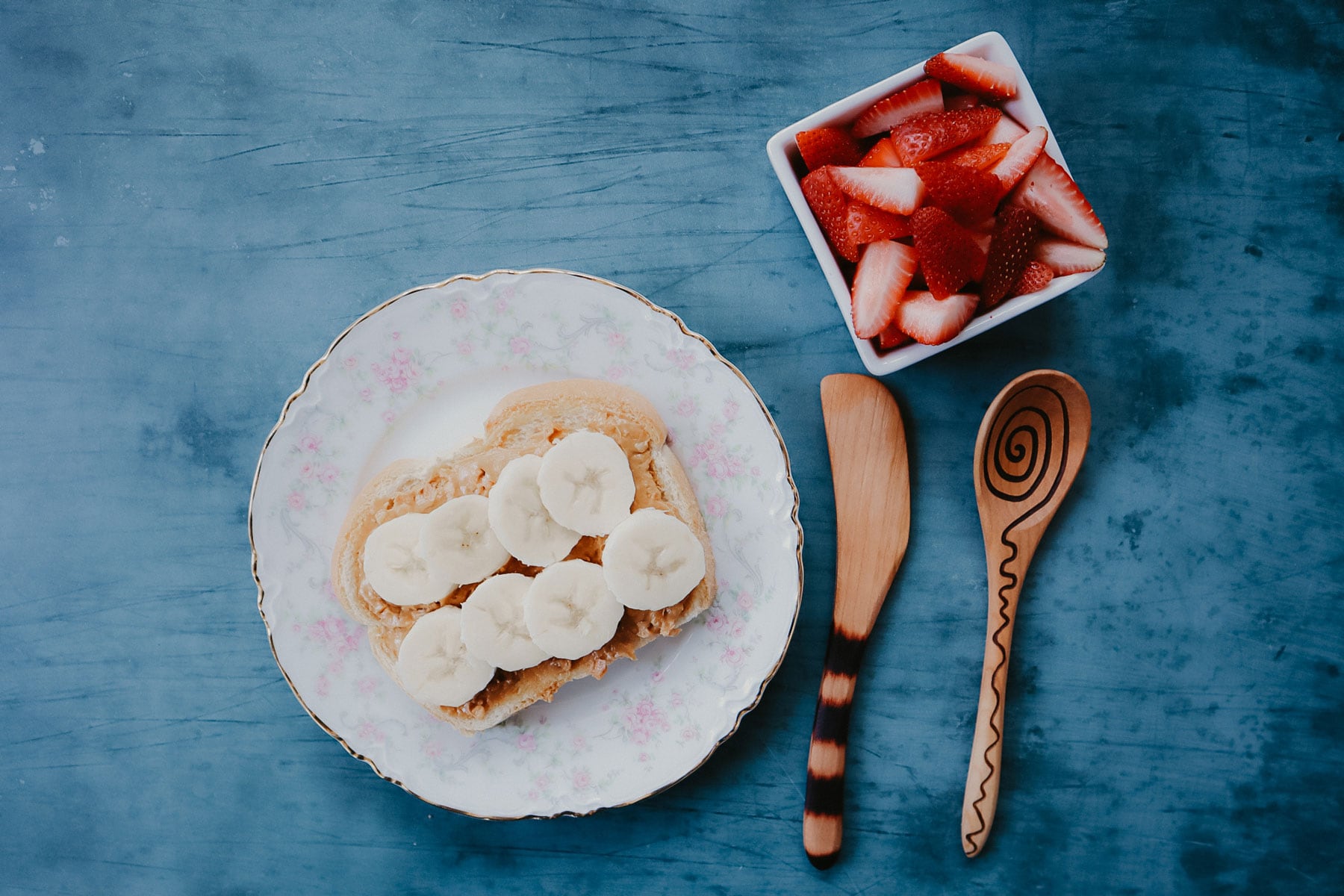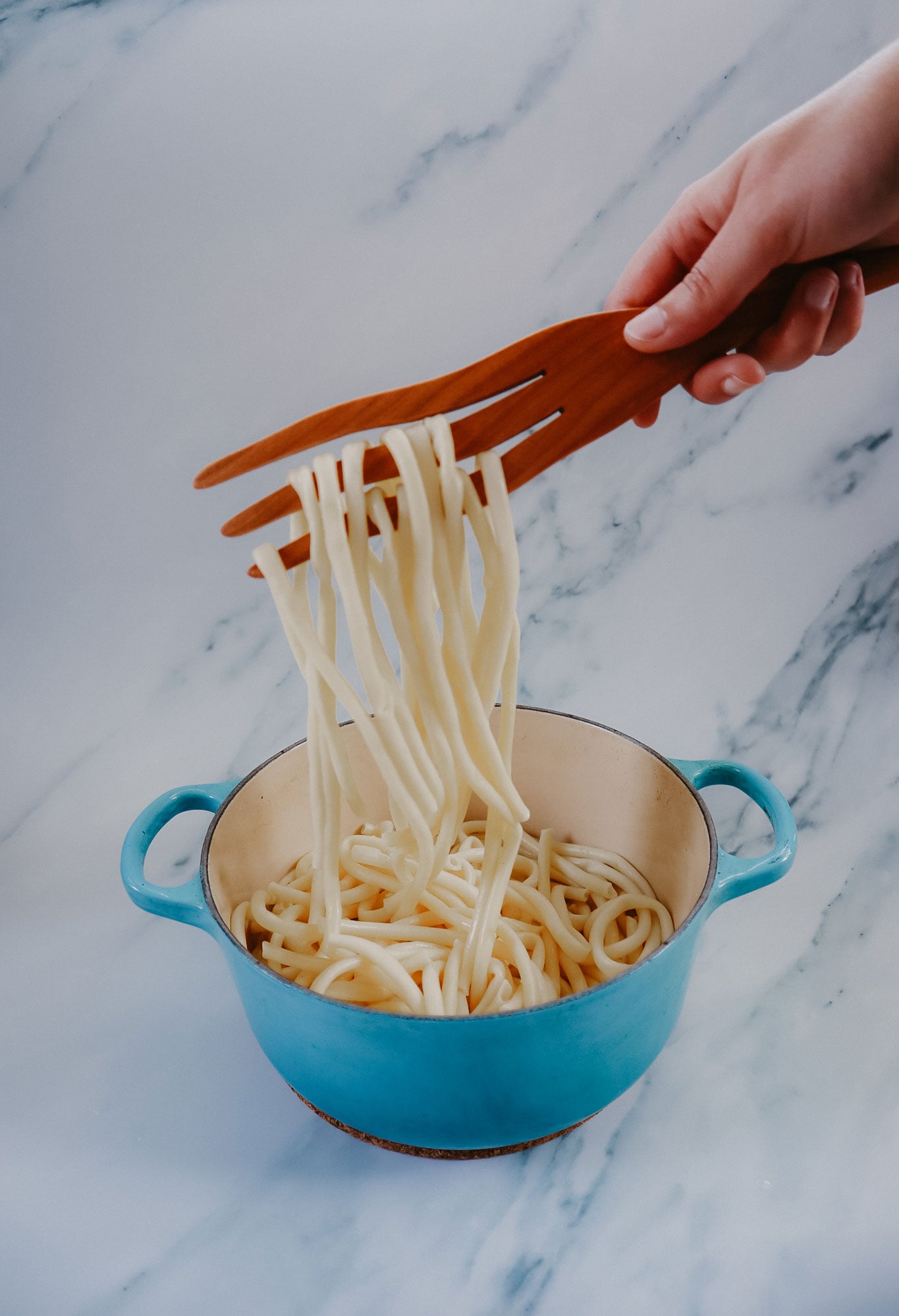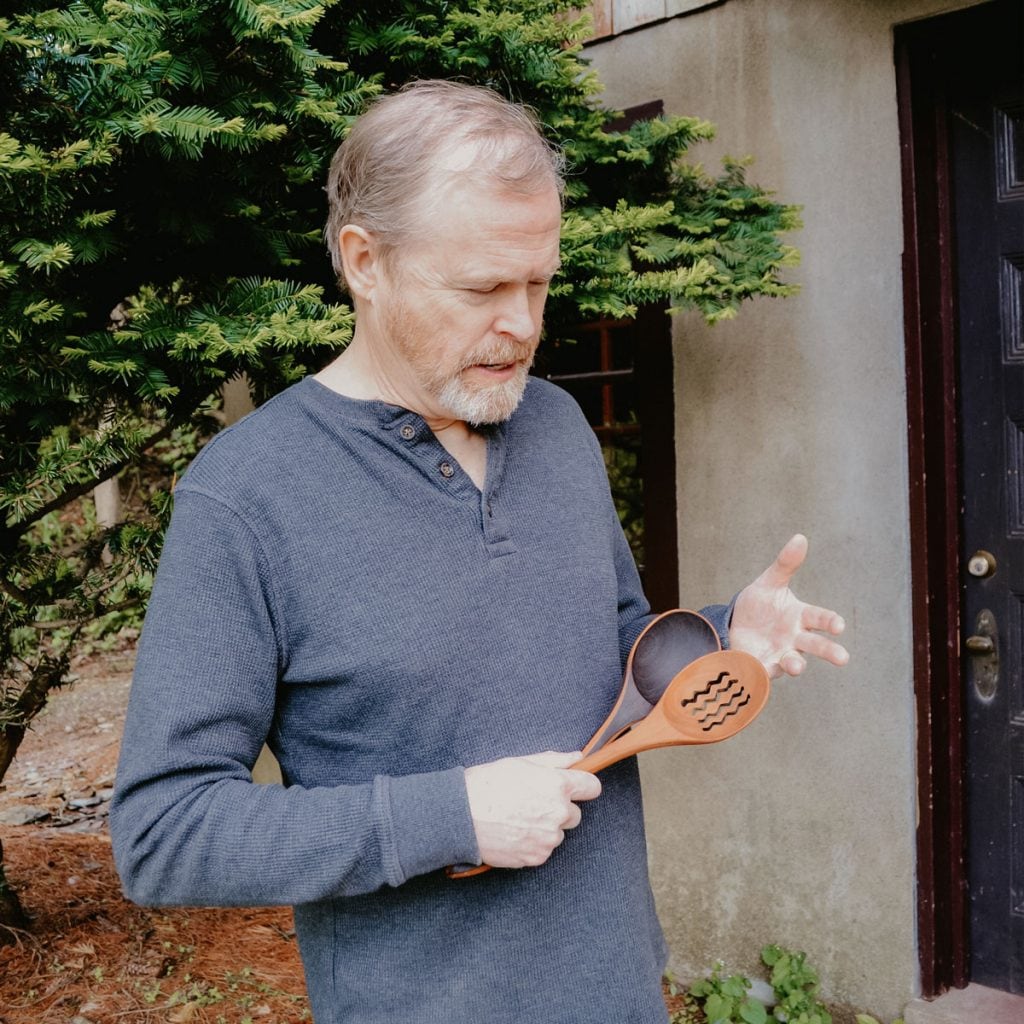
The art of woodworking brings new meaning to the phrase “carving out time.” When the wood is split, its annual rings reveal a timeline of slow progression and growth. It’s the wood’s rings, texture and grain that Jonathan Simons of Jonathan’s Spoons appreciates most when carving his iconic wild cherry wooden spoons. “That has been present in my work ever since. Searching for texture and also the opposite, which is the elimination of texture, meaning making it very smooth,” says Simons.
Simons has been working with wood, carving both objects of beauty and functionality, for over 40 years. Though his career has taken him from furniture making to building seats for canoes, he finds that wooden spoons resonate with him the most. He now focuses most of his energy on crafting uniquely designed utensils made of wild cherry wood from his shop in rural Kempton, Pennsylvania.


“At the beginning, I just wanted to see what was inside a log, so I’d cut it open and it was always beautiful.”
Simons’ journey to carving spoons began in the 7th grade after his teacher introduced him to woodworking. This new-found craft was something he enjoyed sharing with his grandmother, who was also an artist. “She was a potter,” says Simons, “and made these beautiful ceramic lamps that were around two feet tall.” While Simons’ grandmother was blind by the time he was in grade school, the shape and texture of Simons’ wooden projects created a new way for them to connect. “I would visit her and she always wanted to feel what I was working on,” says Simons. “She would tell me it needed a little more sanding. That was a very strong influence on me early on.”
After graduating with an art degree from the University of Illinois in Chicago, Simons returned to his home of Bryn Athyn, Pennsylvania and became an apprentice to a furniture maker. One day, Simons realized he forgot to pack a spoon along with his lunch, so without any hesitation, he grabbed a piece of scrap wood and carved himself a spoon. It was then he developed a deep appreciation for the spoon, its shape and feel, as well as its potential.
“I was so fascinated by the wood grain,” says Simons. “At the beginning, I just wanted to see what was inside a log, so I’d cut it open and it was always beautiful.” His earlier explorations into carving wooden spoons took him through varying kinds of woods that he refers to as “backyard exotics” – trees like dogwood, purple lilac, apple and even apricot – all of which had different swirling grain patterns and contrasting textures. “When I would use every kind of wood, I was creating individual pieces that were inspired by the wood itself,” says Simons. The results were bespoke, one of a kind handcrafted pieces that were gorgeous, but also time consuming and expensive to make. Not everyone was in the market for a costly wooden spoon, and with too hefty of a price tag, people might not even use and enjoy them the way Simons had hoped.


So he decided to streamline his process, opting for wild cherry as his wood of choice, and began focusing more on design and functionality. “When I started focusing on the usefulness itself, then it was much faster than just responding to the grain in the wood,” says Simons. He also noticed that pieces sold faster when he assigned them with a specific function. His long, spindly three-pronged fork could serve many purposes, but it makes sense to buyers when it’s called a Spaghetti Fork. Same goes for the edged spreader. “I found that I could have a nice hefty spreader and people would ask what it was for,” says Simons, “but if I called it a peanut butter spreader, suddenly everyone understood how it could be useful.” Sure enough the strategy worked, and he began selling his wooden spoons to stores, art galleries, and even museums throughout the country.
“What a wooden spoon does is it connects your hand with nature,” says Simons, “and the closer you are to nature, on a mental level, on a physical level and on a spiritual level, you’re healthier.”



Today, Simons sees himself more as an inventor, engineering entirely new spoon designs. He even holds several patents for some of his unique concepts, including a patent for the Lazy Spoon®, a spoon with a clever notch that allows it to rest easily on the side of a bowl. The Lazy Spoon was even used by Rachel Ray and Oprah on the Oprah Winfrey Show, along with his Inside-Out Tongs®, a set of tongs that easily fold flat when not in use.
Each of Simons’ pieces are as much works of art as they are functional. The designs, like the Cat Tail series with their striped and curved handles, are whimsical, but their intuitive shapes and smooth textures make them easy to use in the kitchen. They’re stunning enough to be used as serving utensils at a dinner party, but also handy enough for your everyday cooking.
Simons’ spoons and other utensils bring beauty to the kitchen, and his smart designs create convenient solutions that make cooking easier. But to Simons, it’s not just about function and appearance – it’s about creating a connection to both nature and our food. “What a wooden spoon does is it connects your hand with nature,” says Simons, “and the closer you are to nature, on a mental level, on a physical level and on a spiritual level, you’re healthier.”



Two Storytellers.
One Enchanted Destination.
Where will the path to inspiration lead? Join a journey of design discovery and see how
KitchenAid brings two unique perspectives to life in unexpected ways.
Related Articles
-
 Home & Design July 27, 2020 | 3 min read Bare Pantry To Full Place: Using Staples We've all been there. After a long day when it's time to go to the kitchen and find something easy to make for dinner, what's there to make? Nothing.
Home & Design July 27, 2020 | 3 min read Bare Pantry To Full Place: Using Staples We've all been there. After a long day when it's time to go to the kitchen and find something easy to make for dinner, what's there to make? Nothing. -
 Home & Design October 08, 2020 | 3 min read The Key to a Joyful Kitchen The kitchen is a place that can be overwhelming or inviting, intimidating or a place for creativity to flow freely.
Home & Design October 08, 2020 | 3 min read The Key to a Joyful Kitchen The kitchen is a place that can be overwhelming or inviting, intimidating or a place for creativity to flow freely. -
 Home & Design December 22, 2020 | 4 min read From The Earth To The Table Growing up in Malaysia, Lee has always been interested in design. She specializes in small, contemporary stoneware ceramics made with Malaysian clay.
Home & Design December 22, 2020 | 4 min read From The Earth To The Table Growing up in Malaysia, Lee has always been interested in design. She specializes in small, contemporary stoneware ceramics made with Malaysian clay.
